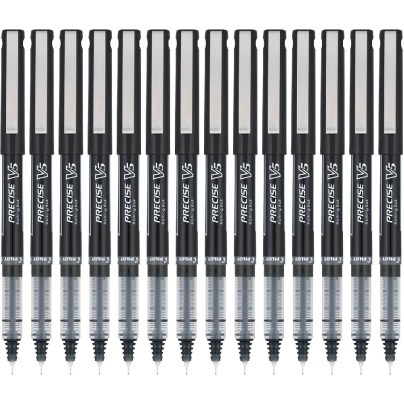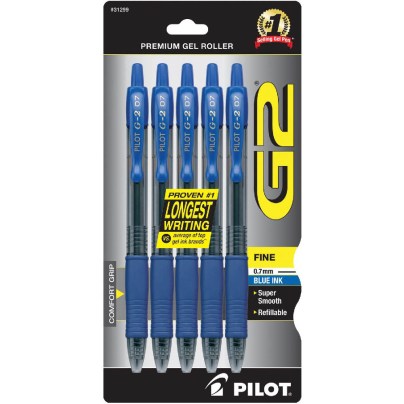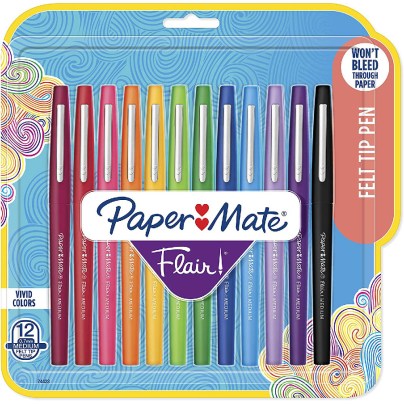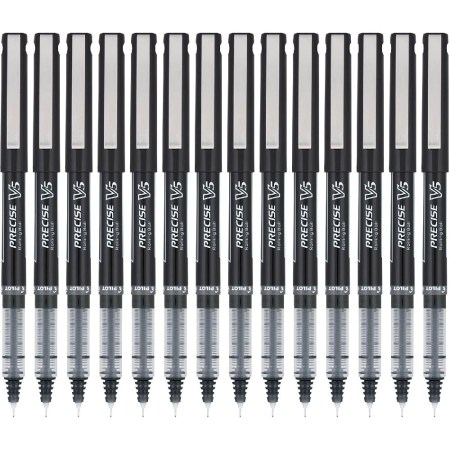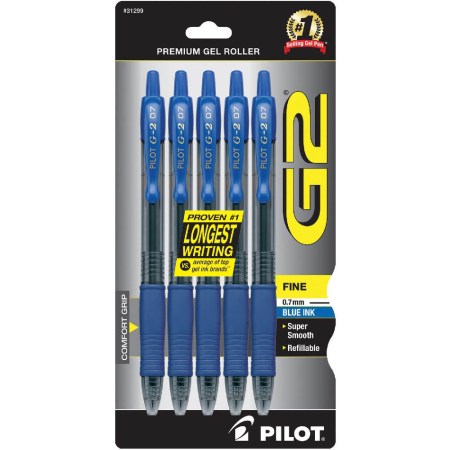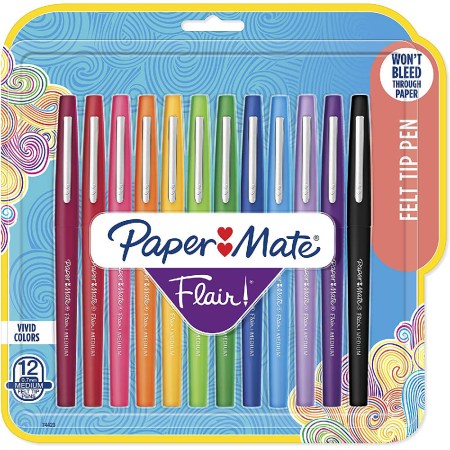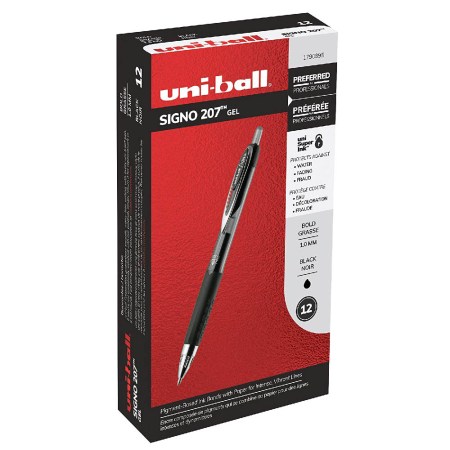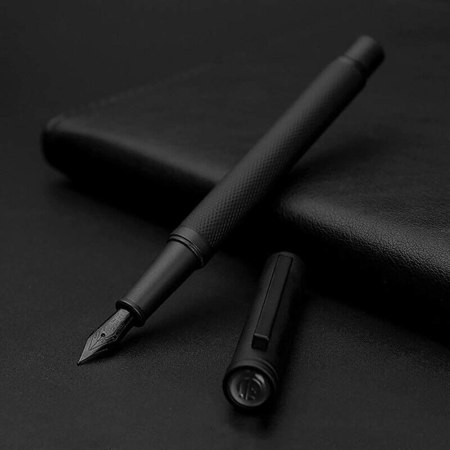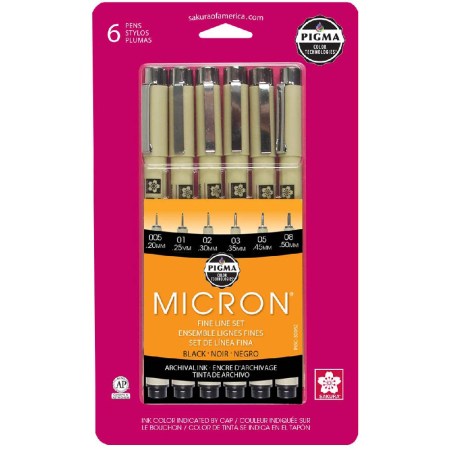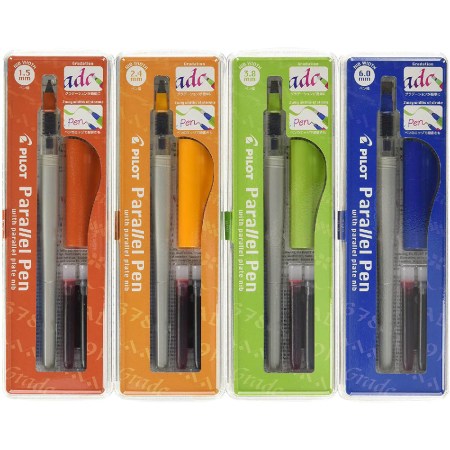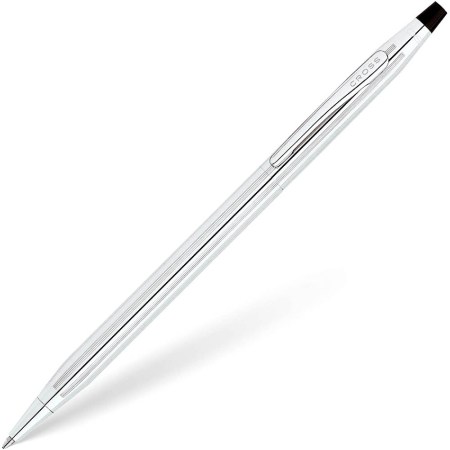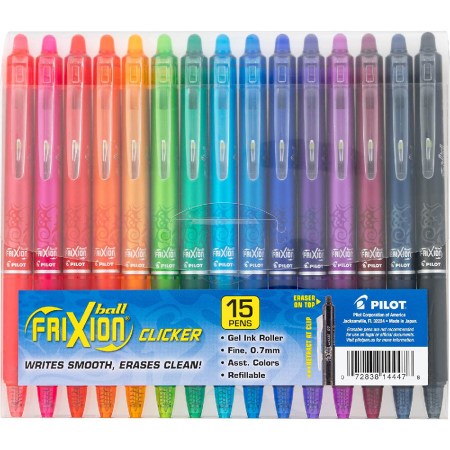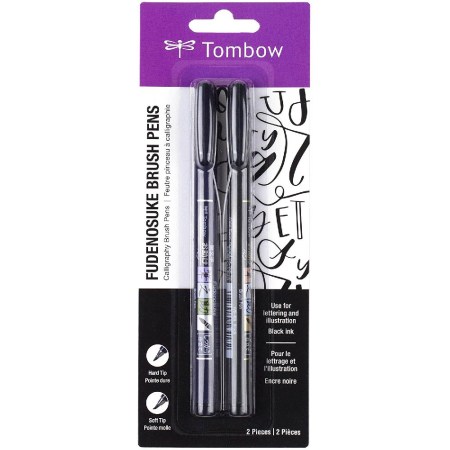We may earn revenue from the products available on this page and participate in affiliate programs. Learn More ›
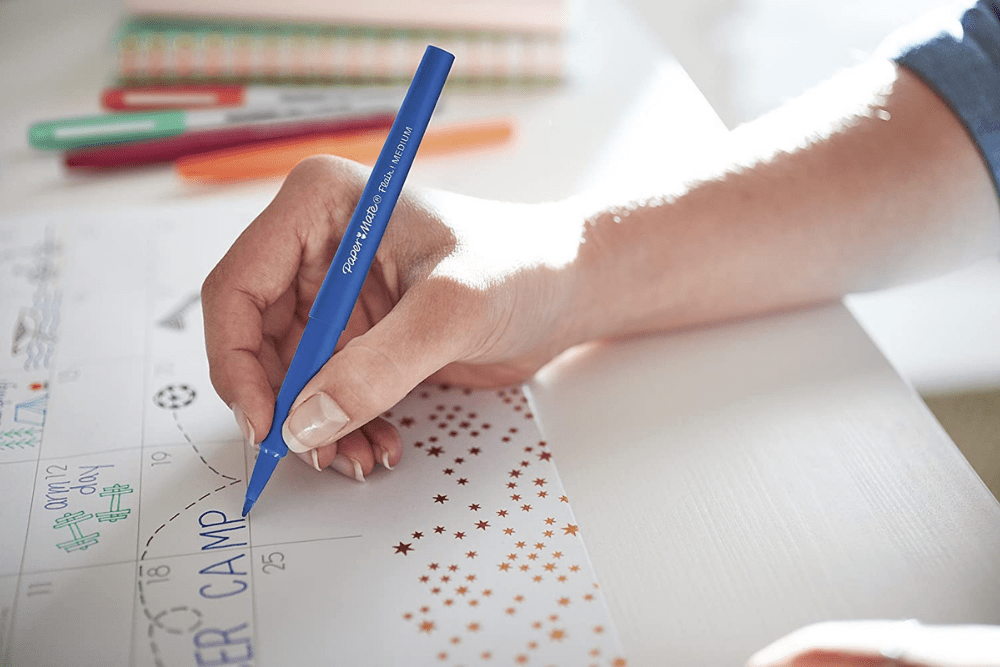
The best pens feel natural in your hand, with ink that flows smoothly without feathering, blotting, or smudging. There are pens to suit each purpose, and everyone has their favorite. In each category, there are some standout performers that glide and move with delicate precision.
This list of pens contains some top picks for specific tasks like bullet journaling and calligraphy, as well as different pen types, like felt tip, gel, and ballpoint.
- BEST OVERALL: PILOT Precise V5 Stick Liquid Ink Rolling Ball Pens
- BEST BANG FOR THE BUCK: PILOT G2 Premium Refillable Rolling Ball Gel Pens
- BEST FELT-TIP PEN: Paper Mate Flair Felt Tip Pens
- BEST GEL PEN: Uni-Ball 1790895 Signo 207 Retractable Gel Pen
- BEST FOUNTAIN PEN: Asvine Matte Black Forest Fountain Pen
- BEST FOR BULLET JOURNALS: Sakura Pigma 30062 Micron Blister Card Ink Pen Set
- BEST CALLIGRAPHY PEN: Pilot Parallel Calligraphy Pen Set
- BEST BALLPOINT PEN: Cross Classic Century Lustrous Chrome Ballpoint Pen
- BEST ERASABLE PEN: PILOT FriXion Clicker Erasable Gel Ink Pens
- BEST BRUSH PEN: Tombow Fudenosuke Brush Pens
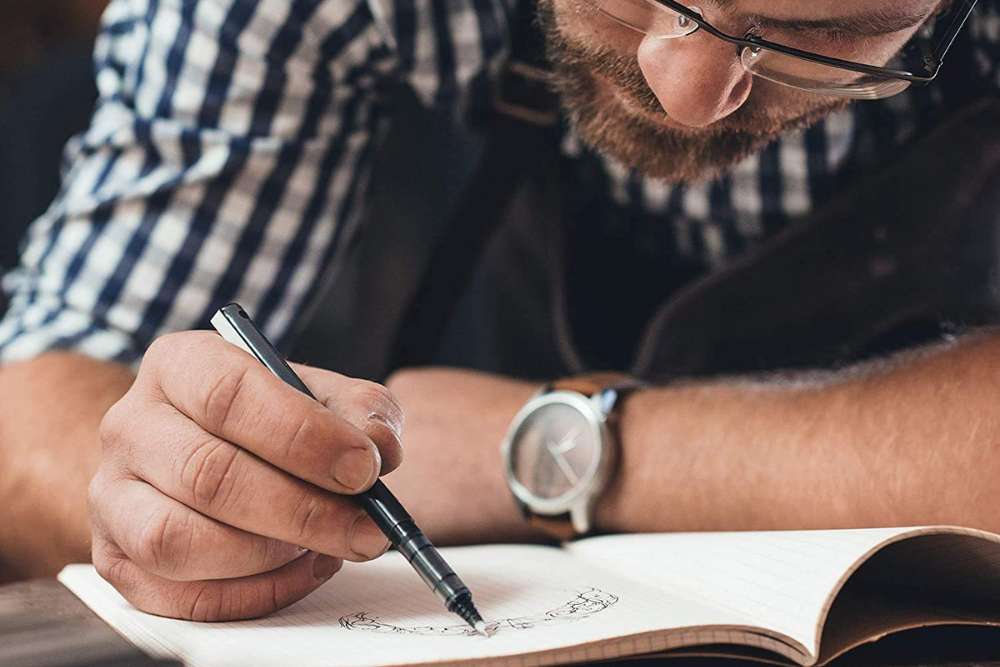
Types of Pens
Different types of pens produce different results. Some inks dry almost instantly, while others soak into the paper. Sometimes a bright, sharp edge might be your goal, while in other cases, you’d rather let the ink fade into the background for a subtle stroke. How you use the pen has a lot to do with the type that’s best for you. Keep reading for more details on the most common pen types and the best uses for each kind.
Ballpoint Pens
Ballpoint pens’ popular design and thick, oil-based ink distinguish them from other pen types. Ink flows over the ballpoint, a metal ball at the tip of the pen. Usually made of steel, tungsten carbide, or brass, the ball prevents ink from leaking out of the pen when it’s not in use. This is the most widely used type of pen because it’s cleaner, less expensive, and easier to use than other types of pens.
Oil-based ink resists drying better than water-based inks, and it’s less likely to soak and fade into the paper or feather. Oil-based ink is viable much longer than water-based ink, which is why ballpoint pens can be tossed aside and forgotten but still work well when you pick them up again. The problem with oil-based ink is that it’s more likely to leave blots, which can then smudge.
Rollerball Pens
A rollerball pen’s design is similar to that of a ballpoint pen, with ink released through the pen’s end via the ball. Rollerballs require less pressure than ballpoint pens to release ink, which means less hand fatigue for the user.
Rollerballs typically have tips with small, sharp points. The major difference between rollerball and ballpoint pens is that rollerball pens use water-based liquid ink. Water-based inks tend to soak into the paper more than oil-based inks, creating a well-defined line. The brightness of the line varies, depending on whether the ink includes pigment or dye.
Pigment liquid inks, even water-based types, contain beds of pigment that don’t soak into the paper as much as dye inks. This is why rollerball pens with pigment ink can make lines that are almost as defined as those of a ballpoint pen.
The upside to using a rollerball pen with water-based ink is that you won’t leave as many blots or smudges as you would using a ballpoint pen. The downside of writing with a rollerball is that the ink can fade over time. These pens tend to dry out faster, too, sometimes before you have a chance to use all of the ink.
Gel Pens
Gel pens are actually a type of rollerball pen. They contain water-based ink with pigments and come in a wide array of colors. Gel ink flows well, but is more prone to skipping and blotting than liquid rollerball pens. The gel ink also takes slightly longer to dry, creating plenty of opportunity for you to rub the side of your palm in your writing and smudge it.
Because they come in such fun, bright colors, gel pens are widely used for artwork and bullet journaling. Gel-pen aficionados who work in office settings can, of course, find conservative blue- and black-ink versions of their favorite pens.
Felt-Tip Pens
Felt-tip pens are made with one of two tip types. The first is a thin, plastic nib surrounded by metal. It dries quickly and creates an even, smooth line with little bleeding. The other nib type is soft and cone-shaped, allowing the user to write with the nib’s tip or its side.
Felt-tip nibs vary in size, but 0.5 mm or 0.7 mm are the most common for everyday use. Because these tips grab the paper slightly as you write, using them feels somewhat like writing with a marker. Whatever your favorite type of ink, there’s a felt-tip pen out there for you: There are felt-tip pens with water-based, oil-based, alcohol-based, acid-free, and permanent ink on the market today.
Fountain Pens
Fountain pens have a pointed, metal nib connected to an ink cartridge, internal reservoir, or converter. Models with an internal reservoir and converter require bottled ink to refill the pen. Pens with ink cartridges are easier to refill, but the ink is more costly in the long run.
High-quality fountain pens are still popular in the business world for their professional, styled appearance. Many of them have refillable ink wells, so you can invest a little more in the pen itself.
What to Consider When Buying Pens
The biggest factors in choosing a pen are how you want it to feel in your hand and how you want the pen strokes to look. Some pens have a wider barrel and are made of chrome, making them heavy in the hand, while other pens are slim and lightweight. Your preference determines which kind of pen is right for you. Before you go shopping, however, consider these other features, too.
Smoothness
Smoothness has to do with how easily the ink flows from the pen. Water-based inks produce a smoother stroke than thicker, oil-based inks. An ink’s other characteristics, like whether it’s acid-free or permanent, can also affect its thickness and, therefore, its smoothness.
Smoothness also has to do with how ink is applied to paper. Fountain pens can produce a beautifully smooth stroke, but knowing how much pressure to apply while keeping the pen moving at a consistent rate is an acquired skill. Liquid-ink rollerball pens tend to have more smoothness because of their fine tips and water-based inks. Gel pens rank a close second because they’re similar in design, but put out thicker ink that often skips or smudges.
Smudging
Smudges happen when the ink comes out too fast, or you slow your stroke and the ink keeps flowing, leaving a blot on the paper. Smudges are more common when using a pen with an oil-based ink because these inks take longer to dry, leaving time for your arm or hand to land in wet ink. Because gel ink also takes time to dry, gel pens are also prone to smudging.
Design
Everyday pens don’t typically need to be fancy or expensive. You just need them to write consistently. On the other end of the design spectrum are fountain pens, which remain popular because of their sleek, professional appearance. A stainless-steel fountain pen with a gold tip makes quite an impression in a professional setting.
Many pens have design features that make them more comfortable to write with, including easy-to-grip textures or rubber grip pads on the end of the pen. If you write a lot, these features can help you maintain control as your hand gets tired. They’re also a nice feature for those who struggle with hand strength.
Bleed-Through
Bleed-through, or ghosting, is when the ink absorbs into the paper and is visible on the other side. It’s more common with water-based liquid inks because these inks quickly soak through the paper. If bleed-through makes you crazy, opt for a ballpoint pen with oil-based ink.
Our Top Picks
Ten pens made our list of top pick, based on their reliability, quality construction, and extra design features that make them fun—and comfortable—to write with.
Best Overall
PILOT Precise V5 Stick Liquid Ink Rolling Ball Pens
See ItThe Precise V5 is everything an everyday pen should be: smooth, smudge-free, reliable, and solid in the hand. This 0.5-mm liquid-ink rollerball pen glides smoothly over rough paper, leaving behind a bright, distinct line that’s appropriate for business, bullet journals, or daily notes. The PILOT Precise has a visible reservoir so you can see when your ink is running low.
There are several variations of the PILOT Precise: There’s a retractable version with a wider barrel, a fancier Art Deco model for a little visual appeal, and 0.7-mm or 0.3-mm versions. The 0.5 mm comes in several colors like green, teal, pink, and purple.
Best Bang For The Buck
PILOT G2 Premium Refillable Rolling Ball Gel Pens
See ItPILOT created a gel pen that’s affordable but provides consistent results. The G2’s gel runs smoothly but dries quickly, making it a good option for left-handed writers. It has less drag than comparable gel pens and doesn’t require a lot of pressure to use, which reduces hand fatigue. The 0.7-mm tip leaves behind a midsize line, and the pen comes in several colors, including black, blue, lime, red, and pink.
Best Felt-Tip Pen
Paper Mate Flair Felt Tip Pens
See ItFelt-tip pens grip the paper with a slight, satisfying drag. Paper Mate’s Flair pens have just enough give in the tip to leave a wide or thin line based on how much pressure you use. The ink soaks into the paper, leaving behind a standard black line on some papers but sinking in for a fainter gray line on others. Though it leaves some variation in color, the consistency in line definition is beautiful.
The Flair comes in black, blue, and a rainbow of colors. The black and blue are great for everyday use, while the colored pens are good options for bullet journaling and other creative work.
Best Gel Pen
Uni-Ball 1790895 Signo 207 Retractable Gel Pen
See ItUni-Ball’s 207 gives you everything you love in a gel pen: a steady line that dries quickly, smooth movement, and a visible ink well that lets you know when it’s time for a new pen. The Uni-Ball’s comfortable, cushioned rubber grip is what really sets it apart from the competition, as does the fact that it doesn’t take heavy pressure to leave behind a smooth line. If you’re looking for a pen that will reduce hand fatigue, this is the one.
The 207 comes in an ultra-micro 0.38-mm tip or medium 0.7-mm tip to give you some variety and precision based on what you need to write or draw.
Best Fountain Pen
Asvine Matte Black Forest Fountain Pen
See ItA chrome barrel protects the ink converter in this attractive fountain pen from Asvine. The barrel’s textured surface helps the user maintain grip and control through each stroke. You get a true fountain pen experience with an inner converter that requires an ink bottle for refilling. While this pen costs more upfront, the barrel and tip will last and perform as long as it is well cared-for.
The Asvine fountain pen’s barrel comes in several colors, including black, blue, dark blue, yellow, pink, and purple. You’ve also got some choices in the nib design: Choose from extra-fine, fine, or bent nib.
Best For Bullet Journals
Sakura Pigma 30062 Micron Blister Card Ink Pen Set
See ItThe Sakura Pigma pens offer clear, crisp lines for creating bullet journal layouts of all types. This set includes pens in six tip widths, ranging from 0.2 mm to 0.5 mm. Thicker tips work well on the outlines for calendars and dailies, while the thinner tips are good for the flourishes and artwork that infuse your journal with personality.
These pens are designed for archival work, so they’re pH-neutral, waterproof, chemical-free, and fade-resistant. The pigment-based ink resists bleeding, smudging, and dries quickly. The Sakura pens produce bright, clear lines that maintain their color and crispness over time.
Best Calligraphy Pen
PILOT Parallel Calligraphy Pen Set
See ItPILOT’s calligraphy pen set comes with four pens with four nib sizes, plus an extra cartridge. Cartridges are easier to manage than converters and bladders, and they don’t require the use of an ink bottle. Once you’ve installed the cartridge, it takes a couple of light squeezes, and the ink starts flowing.
We like how these pens’ sharp nib edges give you precise, tight curves and strokes while their broadsides flow smoothly. Their ink doesn’t tend to dry out in the nib the way it does in some other pens, which means less skipping and smudging if you pick up the pen after not using it for a while. Though these pens offer consistent ink flow, it can take some practice to master managing them. Overall, it’s a set that beginners can grow into and advanced calligraphers can rely on.
Best Ball Point Pen
Cross Classic Century Lustrous Chrome Ballpoint Pen
See ItThe Cross Classic is a ballpoint pen that’s worth refilling: its chrome barrel adds weight that helps propel the tip while you write, and its ballpoint tip glides smoothly over paper without blotting or smudging. This model has a rotating barrel that retracts the tip when not in use.
Cross’s classic design is appropriate for professional settings, and it makes a great gift, too. The Classic Century is also available in other finishes, including 10k gold.
Best Erasable
PILOT FriXion Clicker Erasable Gel Ink Pens
See ItThermosensitive gel ink is the secret behind PILOT’s FriXion pens. Once the ink comes in contact with the friction-based heat of the eraser, it turns clear. You can write and rewrite until you’ve created the right words, doodles, or drawings. The FriXion’s retractable design makes these pens easy to take anywhere, including to school with kids. Kids and adults will both like the rainbow of colors that include black, blue, navy, red, green, purple, pink, turquoise, orange, and lime.
Best Brush Pen
Tombow Fudenosuke Brush Pens
See ItTombow’s Fudenosuke brush pen set includes both a soft- and hard-tip pen. The soft brush tip lets you shift and drag to change the angle and width of each stroke. You can create characters, do calligraphy, or add flourishes as angles and pressure change. The hard tip offers the solid stroke of a traditional pen. Tombow’s pigment-based ink offers bright, clear lines and is less likely to soak through the paper. These pens also come in a rainbow of colors.
FAQs About Pens
Pens are an everyday tool, and you may not think about them much until you realize you have to buy new ones. When learning about pens, there are a few common questions.
Q. How do erasable pens work?
Erasable pens have thermochromic ink that turns clear when heated by the friction created by the eraser.
Q. How do you recycle pens?
Pens contain metal and ink that cannot go through the regular recycling channels. Some companies like TerraCycle recycle mechanical pencils, highlighters, markers, and pens. They sometimes partner with retailers to set up drop-off sites. Other companies, like Crayola, recycle their products. Check with the manufacturer or look for a recycling center near you that accepts pens.
Q. How do you refill fountain pens?
It depends on the type of fountain pen you have. Fountain pens either contain a piston converter, cartridge, or ink bladder. Ink bladders and converters have to be refilled with bottled ink. Cartridges are self-contained and can be thrown away when empty. With this type of fountain pen, you simply insert a new cartridge.
If the fountain pen has a converter, you must take off the barrel and place the tip in a bottle of ink. You then turn the converter counterclockwise to force air out and draw ink into the converter.
To fill a fountain pen with a bladder, you place the nib in a bottle of ink and deflate the bladder. As you slowly release the bladder, it pulls ink into the pen.
